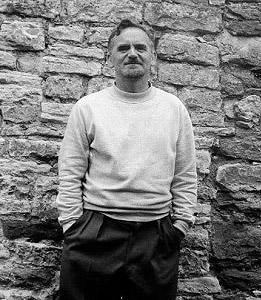 W
WWilliam Etty was an English artist best known for his history paintings containing nude figures. He was the first significant British painter of nudes and still lifes. Born in York, he left school at the age of 12 to become an apprentice printer in Hull. He completed his apprenticeship seven years later and moved to London, where in 1807 he joined the Royal Academy Schools. There he studied under Thomas Lawrence and trained by copying works by other artists. Etty earned respect at the Royal Academy of Arts for his ability to paint realistic flesh tones, but had little commercial or critical success in his first few years in London.
 W
WJames Gillick is an artist working in the figurative tradition. He works from his studio in Louth, Lincolnshire. He paints still-lifes, including game paintings, portraits, horse paintings, as well as church re-ordering and gilding.
 W
WWilliam Buelow Gould was an English and Van Diemonian (Tasmanian) painter. He was transported to Australia as a convict in 1827, after which he would become one of the most important early artists in the colony, despite never really separating himself from his life of crime.
 W
WCecil Kennedy, was a British artist best known for his highly detailed oil paintings of flowers. He was also wont to include a ladybug or a bumblebee in his pictures.
 W
WThomas Keyse (1722–1800) was an English still-life painter, and the proprietor of Bermondsey Spa.
 W
WGeorge Lance was an English painter of still life and portrait miniatures.
 W
WE G Handel Lucas (1861–1936) was an English artist. He was hailed as a child prodigy and exhibited at the Royal Society of British Artists from the age of 14 and at the Royal Academy of Arts from age 17. He is best known for astonishingly realistic flower paintings and still lifes painted in the 1880s, 1890s and 1900s. His major works took anything from 6 to 16 months to paint.
 W
WWilliam Scott was a British artist, known for still-life and abstract painting. He is the most internationally celebrated of 20th-century Ulster painters.
 W
WJames Sillett was an English still life and landscape artist. He showed himself to be one of the most versatile of the Norwich School of painters: although the great majority of his works were still lifes and landscapes, he was also a drawing master and a miniaturist. His botanical paintings illustrations have been praised for their accuracy and attention to detail. These and his still life paintings are considered to be his best work, with some experts ranking him with William Jackson Hooker, whose illustrations were both accurate and charming. Sillett's own accurate depictions of plants were often used for book illustrations. His paintings often have an academic style, influenced by the masters of the eighteenth century in a way that set him apart from his Norwich contemporaries. He exhibited at the Royal Academy between 1796 and 1837.
 W
WEloise Harriet Stannard (1829–1915) was a British 19th century painter known for her still life work. She was one of only two notable women artists associated with the Norwich School of painters, Britain's first provincial art movement.
 W
WEmily Stannard, also known as Mrs Joseph Stannard, was a British still life painter. She was associated with the Norwich School of painters, Britain's first provincial art movement. Along with her niece Eloise Harriet Stannard, she is considered to be the finest British female still life artist of the nineteenth century.